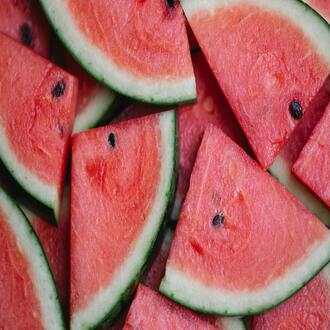Transcription Allergens in vegetables and fruits.
Characteristics of vegetable and fruit allergies:
- Allergy to vegetables and fruits is mostly manifested in children over 5 years of age and young adults.
In Spain, allergy to vegetables and fruits represents 11% of the total in children under 5 years of age, occupying the fourth place, however, in children over 5 years of age it is the most frequent allergy, representing 37% of the total of food allergies.
In many cases, allergy to vegetables and fruits is lifelong, with the exception of potato allergy in young children, which tends to disappear with time.
There is an association between allergies to vegetables, fruits, pollens and latex. The diagnosis of allergy to vegetables and fruits produces frequent false positives, due to their close cross-reactivity with pollens, and food exposure tests must be performed to obtain a definitive criterion.
In the case of fruits, juice tends to provoke more reactions, because the organism comes into contact with a greater amount of fruit more quickly.
It has been shown that the practice of physical exercise, the consumption of anti-inflammatory drugs and alcohol affect the reactions of patients allergic to vegetables and fruits. Symptoms of fruit allergy are not always the same, as the same allergen may produce different reactions.
Symptoms usually develop within the first hour after ingestion, but can sometimes take up to 2 hours. Other molecules known as lipid transporter proteins (LTPs) have been identified as promoting fruit and vegetable allergies.
Lipid transport proteins are found in the peel of fruits, their function is to protect the fruit from the environment, which explains why patients suffer reactions when they come into contact with the peel of some fruits.
Lipid transport protein (ltp) molecules are thermostable, resistant to cooking and digestive enzymes. Symptoms that can cause allergies to vegetables and fruits are:
- Itching, irritation of the mouth and pharynx, edema or swelling of lips and larynx.
- Intestinal symptoms: abdominal pain, vomiting, diarrhea.
- Dermatological symptoms on touch: urticaria.
- Respiratory symptoms: asthma and conjunctivitis, mainly related to patients allergic also to pollen.
- patients allergic also to pollen.
- General reaction associated with lipid transporter proteins (LTP): they cause urticaria, pruritus, respiratory and digestive discomfort and edema, and in some cases, dyspnea and anaphylaxis.
Allergenic components in vegetables and fruits. List of the main allergens and vegetables and fruits that contain them:
- Pr-2: Banana, potato and tomato.
- Pr-3 (chitinases): Chestnut, avocado and banana.
- Pr-4 (Chitinases): Turnip and elderberry.
- Pr-5 (Thaumatin): Apple, cherry, bell pepper, kiwi and grape.
- Pr-10: Apple, cherry, apricot, pear, celery, carrot, hazelnut, potato and parsley.
- Pr-14 (Lipid transport proteins): Peach, apple, cherry, apricot, plum, soybean, asparagus, lettuce, grape and carrot.
- Profilins: A wide variety of fruits and vegetables.
Food products that may contain vegetables and fruits:
- Yogurts and other dairy desserts.
- Juices.
- Macedonias.
- Cereals, chocolates, cakes, bread, ice cream, jellies.
- Dried fruits or candied fruits.
Fruits may constitute additives in products such as pharmaceuticals, toothpastes, and candies.
Recommendations for the treatment of allergies to vegetables and fruits:
- Do not eat the fruit or vegetable that causes the allergic reactions, also avoiding its consumption as an ingredient in a product.
Patients allergic to fruits and vegetables are recommended to eat other fruits or vegetables with caution, always peeling the fruits and observing the possible appearance of allergic symptoms.
It is recommended to read labels to be aware of each of the ingredients of prepared foods.
They should be aware of possible reactions to pollens and latex. The vegetables that are considered safest for people with lipid transport protein (LTP) allergies are carrots, potatoes, legumes and peppers.
Pollen allergy vaccines are recommended for immunotherapy purposes, as several studies have shown that they may improve allergy to fruits associated with pollen.
The use of omalizumab is also recommended to inhibit or decrease the allergic response. This drug is used for the treatment of severe allergic bronchial asthma and chronic urticaria.
vegetables fruits




